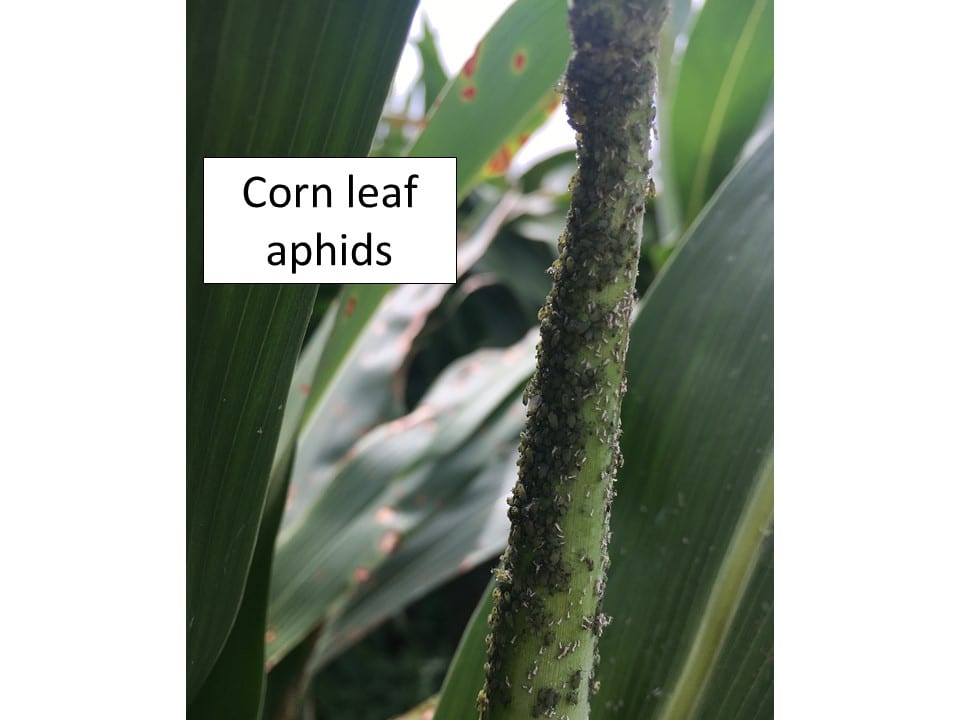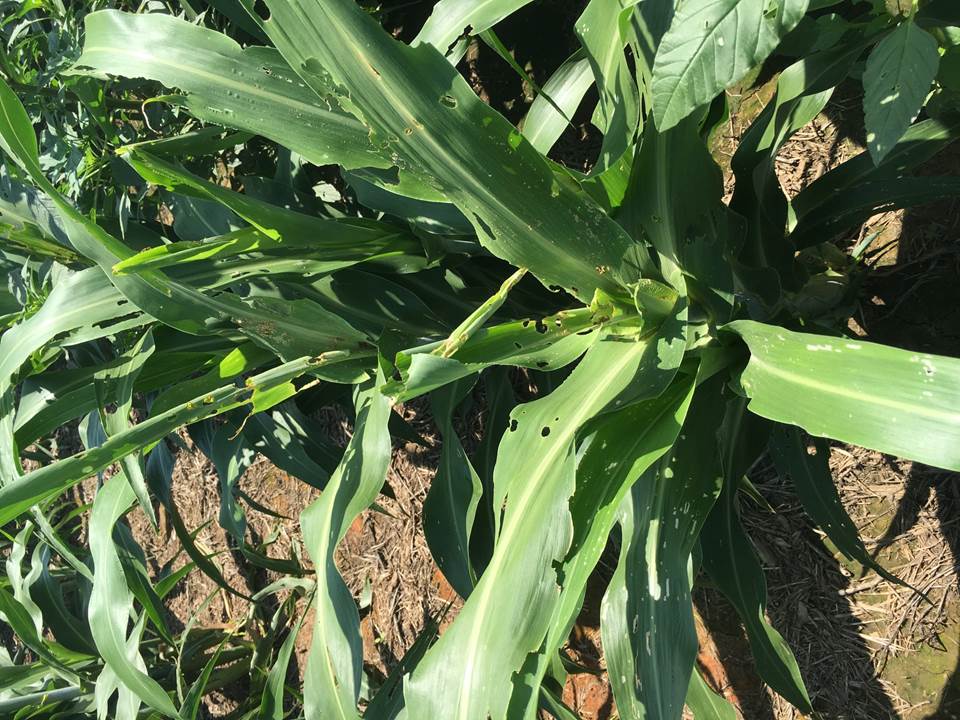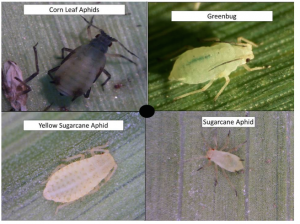by –J.P. Michaud, Brian McCornack, Wendy Johnson and Sarah Zukoff
As we reach the midpoint of September, it is becoming clear that the impact of sugarcane aphid (SCA) in Kansas will be only a fraction of what it was in 2015 or 2016. Multi-state monitoring efforts using myfields.info to track SCA have reported SCA in 138 different counties in 8 states in 2017; the first record in Kansas was on August 1 in Sumner Co. You can track county movement by visiting the myFields distribution map, or sign up for an account to receive an email alert when SCA has been detected in your area. Only southwestern Kansas has had some fields with infestations heavy enough to warrant treatment, and many others have remained below threshold (see our Scouting Card for more information). A large proportion of the earlier planted fields are now mature enough to be safe from yield losses, even though SCA may be able to survive on these plants for some time. At this point, only the latest planted fields that have not yet filled grain remain at risk, and lower overnight temperatures are slowing aphid activity. Remember, SCA can survive overnight freezes and continue to feed on plants as long as they have any green tissue remaining, although without any further impact on yield if grain fill is complete.
Decreased acreage
A substantial decrease in sorghum acreage this year, especially in the regions of central Kansas that were most affected in 2016, has likely impeded northerly movement of the aphid this year. Reduced sorghum acreage, much of it converted to soybeans and dryland corn, has meant the aphid must traverse longer distances to reach suitable plants on which it can establish populations capable of producing the winged migrants that enable further spread. But several other factors have likely been even more important.
Improved management
There has been a much higher level of awareness among sorghum growers, and much better preventive and remedial management of the aphid in the southern regions that are the source of aphids for Kansas infestations. The widespread adoption of seed treatments in south Texas effectively prevents the infestation of young plants for up to a month or longer. An increase in the acreage planted to the many hybrid varieties expressing resistance to the aphid has greatly impeded its ability to produce large populations so quickly. Timely scouting and identification by concerned growers has resulted in the early discovery and effective treatment of fields that did exceed economic thresholds, which in turn reduced the number and size of alate swarms that dispersed northward in 2017. Look for more help on scouting and determining treatable infestation levels here: KSU Scout Card
Evolving natural enemies
Just as pest species can evolve new behaviors (for example, attacking a new host plant), so beneficial species can quickly evolve new pest/host plant associations. An example of this is provided by the Asian multicolored lady beetle, Harmonia axyridis, which last summer produced very large populations in Kansas sorghum for the first time, feeding primarily on SCA. This lady beetle was not found in sorghum previously, but was drawn into fields by abundant SCA, and is now responding to sorghum as a habitat containing many types of suitable prey. This year we have found it regularly feeding on corn leaf aphids and greenbugs, in the absence of SCA, something we had not previously observed. Similarly, H. axyridis did not frequent soybeans until the arrival of soybean aphid in 2002, whereupon it quickly became a key source of mortality for this aphid, and has remained a regular resident of soybean fields ever since. While the example of H. axyridis is quite obvious and visible, many changes in the responses of other aphid natural enemies in the sorghum agroecosystem are more subtle, but also important. For example, the greenbug parasitoid, Lysiphlebus testaceipes, appears to be gradually overcoming SCA immunity to parasitism, and we are starting to find some successfully mummified SCA. Aphid natural enemies are now colonizing sorghum faster, and in greater numbers, in response to SCA. Surveys for SCA in central Kansas revealed many small colonies of greenbug, corn leaf aphids, yellow sugarcane aphids, and English grain aphids, all approaching extinction due to heavy predation and parasitism. Lacewings and hoverflies were especially abundant, with adults flying everywhere and several lacewing eggs on almost every lower leaf, independent of the presence of any aphids.
In summary, we are clearly advancing from the epidemic phase of the SCA invasion to the attenuation phase, and considerably faster than we might have expected. Vigilance will be required for the next few years, and appropriate monitoring and management will need to be maintained, but it is quite possible that 2016 will mark the high point for SCA problems in Kansas and we will not see another year that bad again.
Photo caption:
A colony of sugarcane aphid showing evidence of substantial predation. Note ‘bloodstains’ (aphid hemolymph) along leaf midrib and the fact that aphids are widely scattered rather than forming a compact colony.




















